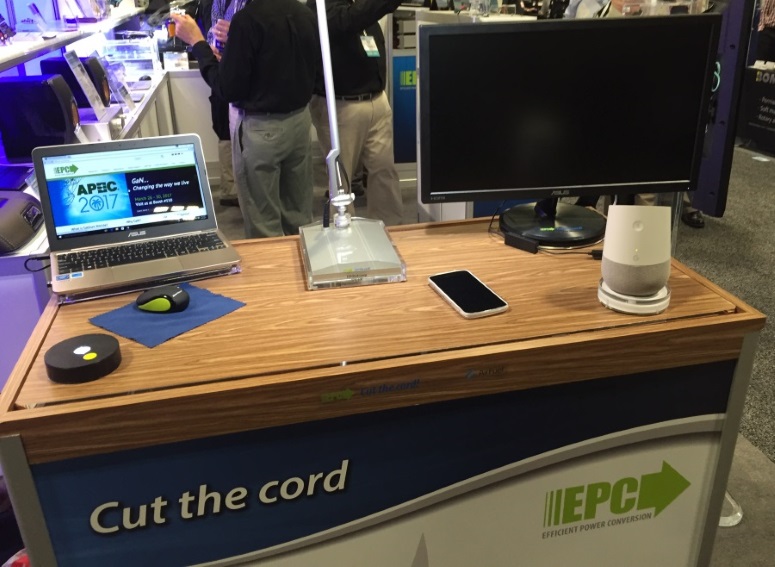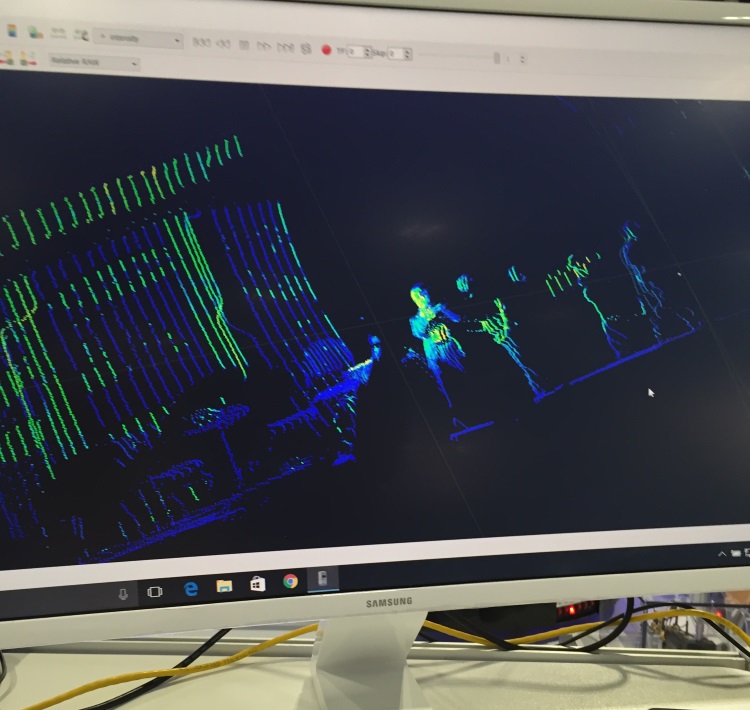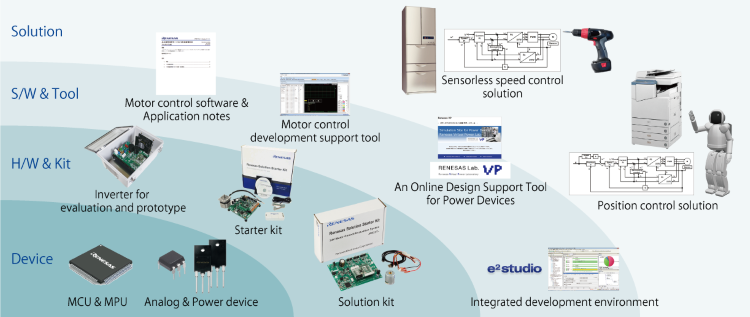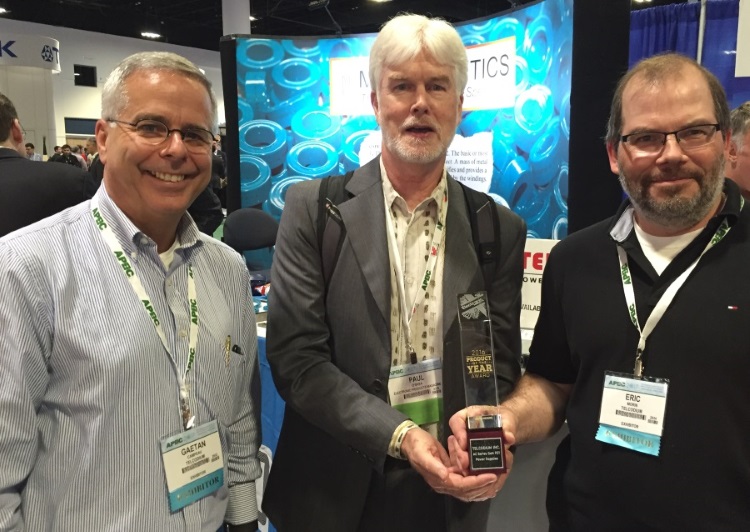Unlock power for datacenters with ICE Block/Switch
In this video, Mark Adams, Sr VP for CUI talks about software defined power and the latest introduction by CUI unlock power for datacenter applications. The new product is called Intelligent Control of Energy or ICE Switch that is a follow-up to its initial offering called ICE Block. The ICE Switch looks at the A and B feeds to optimize it for non-critical applications.
The company successfully deployed evaluation units with the ICE Block’s peak shaving capabilities to Fortune 500 companies and data centers to bring the benefits of what they call, elastic power to data centers. Watch this interview at APEC 2017 for the latest information about ICE Switch and how it can help you use stranded power for some other applications.
Efficient Power Conversion (EPC)

EPC GaN technology enables this entire surface to be a charging area.
As wireless power gains popularity, there is a push for operation in the higher frequency ISM bands of 6.78 MHz and 13.56 MHz where resonant systems allow high spatial freedom at high efficiency. At these high frequencies, traditional MOSFET technology is approaching its capability limit. The eGaN FETs from EPC provide lower capacitance and inductance with zero reverse recovery charge (QRR) in a smaller footprint for a given RDS(on) than comparable MOSFETs.
 Visitors to the EPC booth are “lit up” with LiDAR.
Visitors to the EPC booth are “lit up” with LiDAR.
The painting of the LiDAR (Light Distancing and Ranging) screen becomes possible only with the power and speed of GaN technology. LiDAR uses pulsed lasers to rapidly create a three dimensional image or map of a surrounding area. LiDAR technology allows for high accuracy, larger coverage areas, and increased speed and efficiency of data collection. The technology has traditional applications in mapping, coastline management, geological surveys, meteorology, and natural resource exploration.
EPC offers its eGaN FETs that have the ability to switch ten times faster than the silicon-based power MOSFET. That speed gives LiDAR systems superior resolution and faster response time. These characteristics enable new and broader applications for LiDAR such as real-time motion detection for video gaming, computers that respond to hand gestures, and fully autonomous vehicles. Read a review from Steve Taranovich.
GaN Systems Enables Wireless Power Transfer
Larry Spaziani VP of Sales/Marketing for GaN Systems shows off a drone demo that was a collaboration between Imperial College in London, and GaN Systems. The drone in the video has a 250 W, 13.56 MHz transmitter from the Imperial College London that wirelessly powers a non-battery equipped airborne drone in real-time.
This wireless power transfer system is AirFuel-compliant and can also be used to charge multiple phones, tablets, and laptops. It is also scalable and adaptable for use in toolboxes and factory robots.
The primary applications driving the demand for wireless power transmission (WPT) are integrated solutions for charging individual battery-enabled devices and charging multiple devices simultaneously. The most effective WPT integrated solutions are high-frequency (6.78 and 13.56 MHz) Class E and EF designs that use GaN transistors to reduce systems size 2-3 times and to reduce charging system cost. To satisfy the requirement for optimally performing GaN transistors in Class E and EF designs, GaN Systems’ customers are using the company’s family of 650 V, E-HEMTs. This family of transistors provides a solution that enables efficient resonant wireless charging at power levels from 20 W to 2,500 W.
Renesas/Intersil
The business news for Renesas Electronics was that the company completed the acquisition of Intersil. The transaction brings together the advanced technology and end-market expertise of the two companies. Renesas also plans to continue operations at Intersil’s production facility in Palm Bay, Florida, U.S and Intersil’s home office in Milpitas. Also, Intersil becomes a wholly-owned subsidiary of Renesas.

At APEC, Renesas featured an integrated motor drive solution boards. For example, it showed the Renesas motor drive solution board, which is a single system-on-chip (SoC) that combines a microcontroller, analog front end, and customized firmware to drive a motor with optimized efficiency and minimum heating. This integrated motor drive solution can control and drive motors with power levels to 1,500 W.
The booth also had on display a micro-motor solution board. These small BLDC motors need very accurate position control over a wide operating range to provide both high torque and very low RPM functionality (like a stepper motor) as well as smooth, high-RPM performance. The company’s Micro-Motor Solution uses an SoC that combines an MCU and a DSP to enable a small BLDC to provide both optimal low-RPM, position-critical applications where engineers have traditionally used a stepper motor, and also provide the high RPM performance of a BLDC.
Telcodium power supplies with Transphorm GaN technology

Telcodium’s President Gaetan Campeau, and CTO Eric Morin proudly show off the Product of the Year award presented by Electronic Products Magazine’s editor Paul O’Shea during APEC 2017 for its GaN-based AC series of redundant power supplies.
Telcodium introduces the AC series of redundant power supplies that replace the typical three-module power supply architecture (that have two power supply bricks and an intermediate bus converter [IBC]) with a single power module with redundant ac feeds. The power module operates at 94% true system efficiency (TSE) — reducing average energy loss by 13% or more. To achieve the same TSE with the typical three-module power supply, the bricks and IBC would each need to yield a 97% efficiency — which exceeds the 80Plus Titanium specification (95% x 95% = 90.25%). This has yet to be demonstrated by any other power supply manufacturer. Additionally, the new module is 30% smaller than the typical versions with two bricks and eliminates the standalone IBC. The high efficiency and size reduction were made possible by the use of JEDEC-qualified 650-V GaN FETs from Transphorm and also some innovative design engineering. The smaller size is a big deal for the targeted market for this power supply, which includes the data center, server, and telecom markets.
See APEC observations — Part 1 for more insights.
Advertisement





